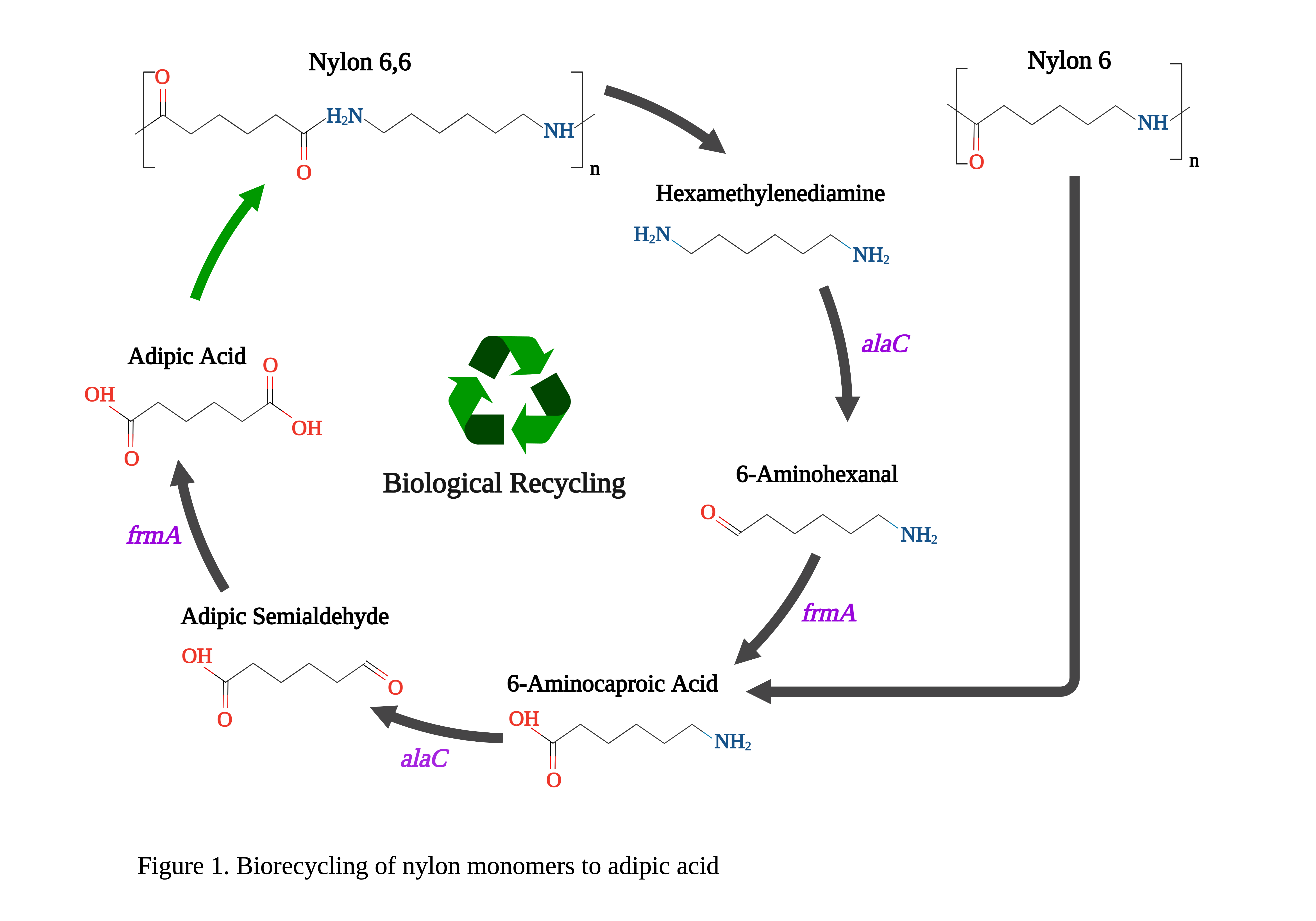(70b) Biorecycling of Nylon Monomers to Adipic Acid through Directed Evolution in Pseudomonas Putida KT2440
AIChE Annual Meeting
2024
2024 AIChE Annual Meeting
Food, Pharmaceutical & Bioengineering Division
Using and Containing Evolution: From Genes to Genomes
Monday, October 28, 2024 - 8:40am to 8:58am
We employed a CRISPR-assisted directed evolution process by introducing a comprehensive gRNA library to P. putida, cultivating the resulting bacterial library in modified M9 medium with HD or ACD as the sole nitrogen source (M9-NHD/ACD). This accelerated evolution was followed by adjusting the growth constant using a custom chemostat system to induce adaptive responses in the evolved strain. Upon analyzing the transcriptomic data of the evolved strain and comparing it to the wild-type strain, we proposed a mechanism by which P. putida can effectively convert HD or ACD to adipic acid (Figure 1). Validation of the proposed pathway included downregulation of significant genes identified through RNA sequencing using CRISPRi. The resulting strains' growth rates were evaluated in M9-NHD/ACD medium, confirming the pathway's effectiveness in facilitating HD/ACD conversion. Furthermore, expressing the pathway in the wild-type Escherichia coli and P. putida and successful growth in M9-NHD/ACD, further validated the proposed pathway. This was achieved through synthetic biology techniques, including designing de novo promoters and ribosome binding sites for effective pathway expression on a single plasmid. Our findings demonstrate the successful application of a novel CRISPR-assisted gRNA library for accelerated evolution in P. putida. Additionally, the biorecycling of HD and ACD into adipic acid, suggests a circular economy approach in polymer production, further emphasizing the impact and potential of this research. In conclusion, this study represents coupling of evolution strategies and synthetic biology techniques offering promising avenues for waste biorecycling.
